

|
Information and discussion regarding garden diseases, insects and other unwelcome critters.
|
 |
|
|
Thread Tools | Display Modes |
|
|
|
|
#1 | |
|
Tomatovillian™
Join Date: Sep 2009
Location: Alabama
Posts: 7,068
|
Quote:
There are definitely dangers when using a product that is so reactive like bleach. Your sprayer must be free of other chemicals and you must wash it immediately after use. If your mixture is too concentrated it can definitely burn healthy leaves but if it is too weak it wont be effective. If you spray it in bright sunlight you can have leaf burn. I certainly would avoid breathing any mist from it as I would any chemical. There are some diseases that it is not as effective on as others but since I usually have several to deal with at any one time that isn't a real problem. Sometimes multiple sprays are needed and sometimes in the case of severe diseases in severe conditions the mixture needs to be so strong it will actually cause some leaf burn in order to help with that disease (I'm talking about Late Blight). As to a controlled experiment I don't think anyone has a vested interest if making bleach a better alternative to the expensive fungicides whether chemical or organic. I did consult with a couple of chemist when I started and during the experiment. The one of them that is a gardener himself now uses the bleach spray regularly for disease control in his garden. As to your concern about adding more moisture the effect of the bleach in our humid climate is to neutralize a lot of the fungus and stuff that will grow any way unless it is stopped. My plants are generally soaking wet every morning til at least 9 am so a little water isn't going to matter especially since it is very sterile for a change. One of the most effective times to use the bleach spray is between rains when other fungicides are washed off losing their preventive affect and leaving the plant wet and vulnerable. It is very impractical and expensive to use things like Daconil during stretches of frequent rain and it is very ineffective. Copper is a little better but a hard rain will wash if off too. Sulfur is not too good here because of the leaf burn when the temps are above 90 degrees. Bill |
|
|
|

|
|
|
#2 |
|
Tomatovillian™
Join Date: Sep 2014
Location: CT
Posts: 290
|
So, to my great dismay neither the serenade nor copper seem to be slowing it down on a few of them; I must not have caught it as "early" as I thought. I'm thinking about testing the bleach spray out on one plant for now, and then reassessing ... I assume it's not completely necessary to first remove all affected foliage, as the bleach spray will simply destroy the infected leaves right? I'd rather not defoliate too much more if it isn't necessary. I'll let ya know how it works for me Bill, thanks!
|
|
|

|
|
|
#3 | |
|
Tomatovillian™
Join Date: Sep 2009
Location: Alabama
Posts: 7,068
|
Quote:
I sprayed every plant in my garden with the bleach spray yesterday morning and just went out and checked everything. Looks like I had a little more gray mold than I thought but it is good to catch it early. It is just harder to see when the plants are always wet like they have been for the last two and half weeks. Other than the few plants with a little gray mold and a few showing some EB the plants look terrific for this time of the year especially considering the rain and heat we have had. It has been dry here for two days but it is forecast to start back raining again this weekend so I am going to apply a little TTF. My plants look a little pale, especially the oldest ones so they need a little boost right about now. I hope to spray with copper or Daconil this afternoon or tomorrow. I will probably go with copper since rain is forecast so soon again. Bill |
|
|
|

|
|
|
#4 |
|
Tomatovillian™
Join Date: Sep 2014
Location: CT
Posts: 290
|
Hey Bill,
So I treated with the 5oz/gal ratio (8.25 SH), and so far so good.. Initially none of the leaves responded but it seems they're dying back now (48 hours).. The Isis candy's are displaying some mottling on the stems now, I presume it's due to the bleach reacting with the mold...? I'm going to defoliate what's necessary tomorrow, and then follow up with some serenade and a compost tea to inoculate the phyllosphere with some good guys... Thanks for the help! 24 Hours after spraying: 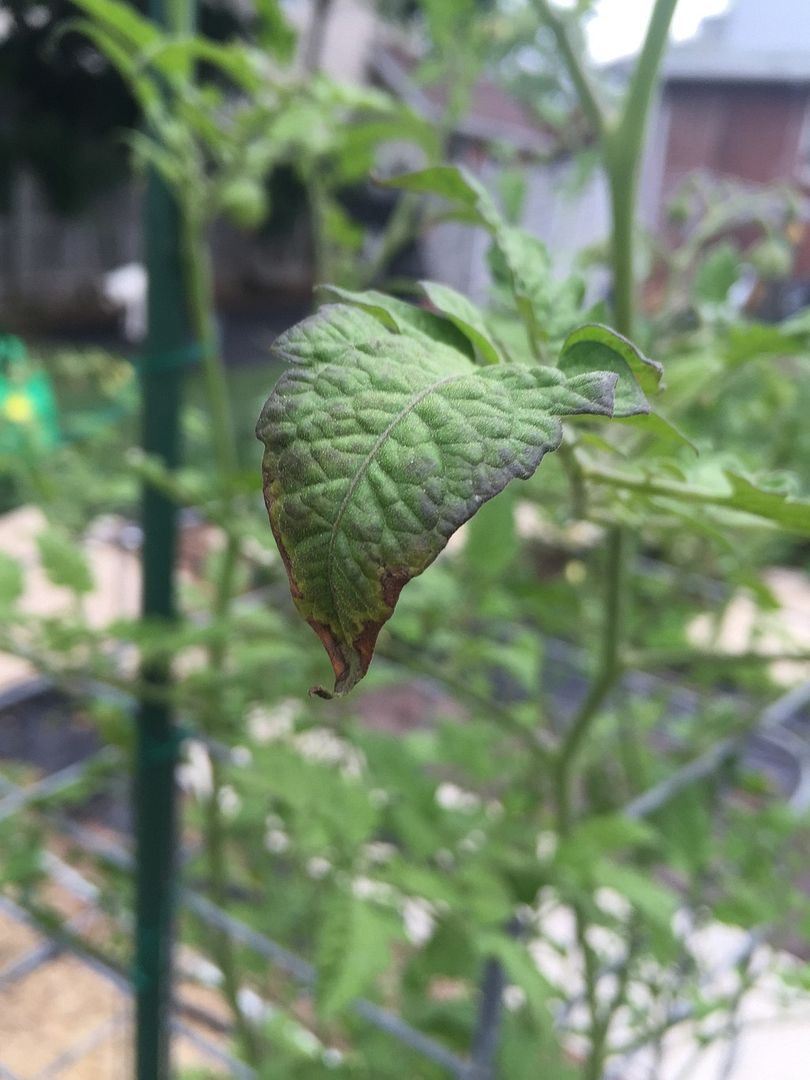 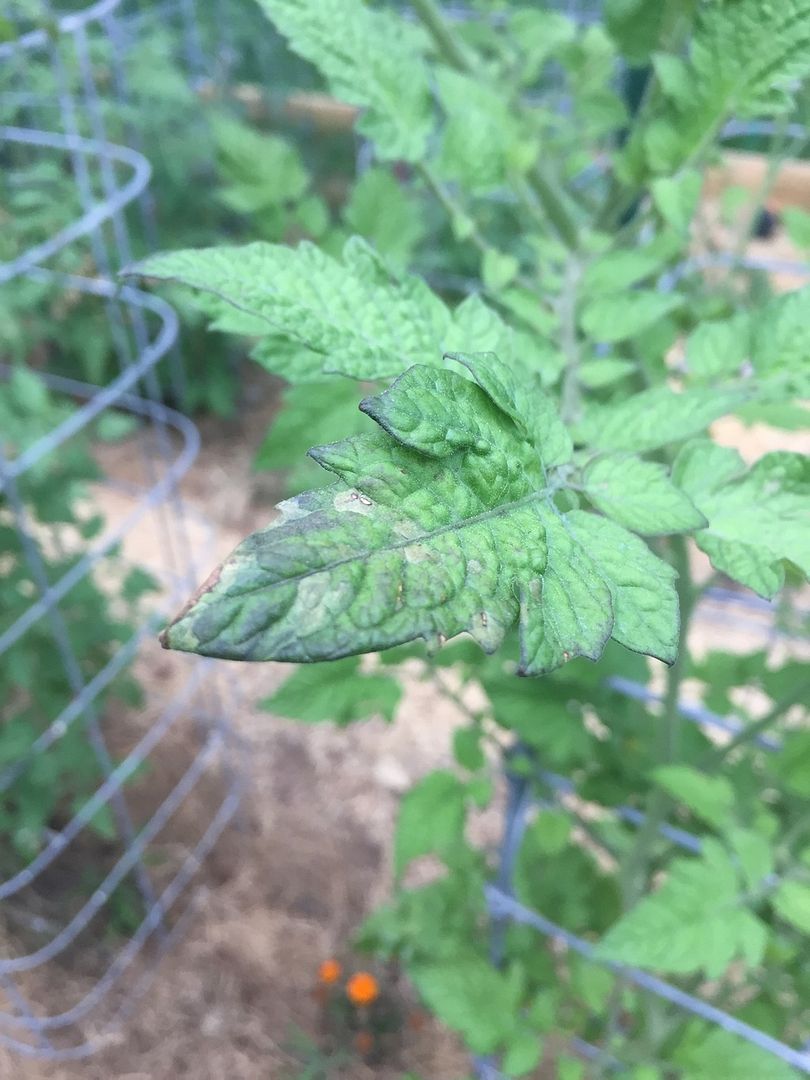 Stems after 48 hours: 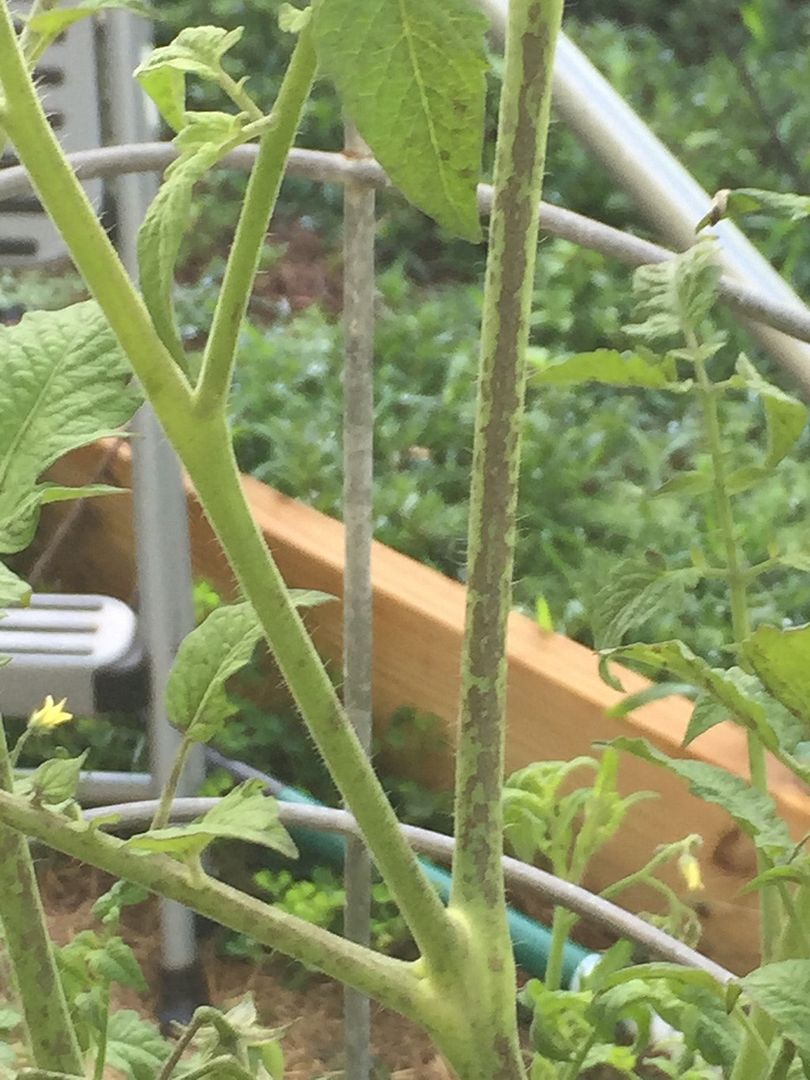 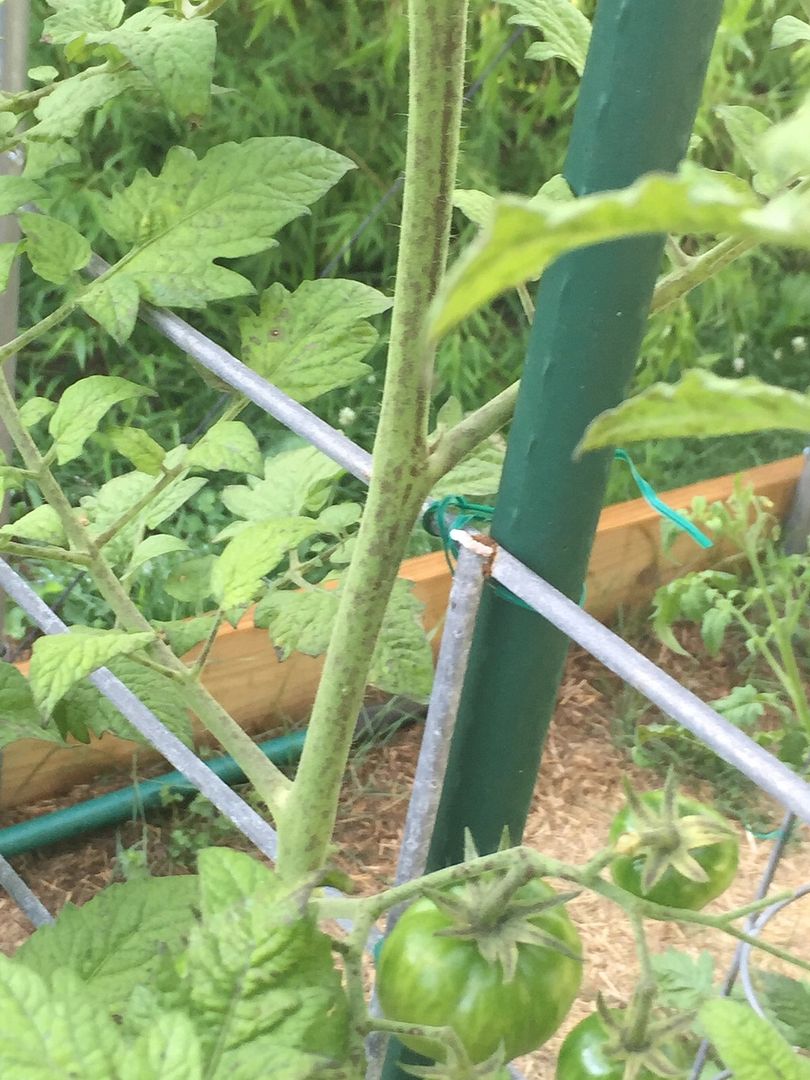
Last edited by Mike723; July 10, 2015 at 12:35 PM. |
|
|

|
|
|
#5 | |
|
Tomatovillian™
Join Date: Sep 2009
Location: Alabama
Posts: 7,068
|
Quote:
Bill |
|
|
|

|
|
|
#6 |
|
Tomatovillian™
Join Date: Oct 2013
Location: Chicago IL
Posts: 857
|
Mike, thanks for posting pics! I did bleach treatment to my potted plants too and am following. My potted plants around the house- few, not all, got Septoria.
Compost teas/ compost extracts/occasional LG excel/actinovate/ copper spray x 3 this summer/ aspirin water every 10 days seems to be making some difference at community gardens. I am not winning but also not loosing much either. If I can stay same till the end of the summer I will feel very lucky. Am excited about new microbes in my life coming from Microbe Life. |
|
|

|
|
|
#7 |
|
Tomatovillian™
Join Date: Sep 2014
Location: CT
Posts: 290
|
So a little update.. I sprayed all the gals with a compost tea on Saturday, except for the Isis.. I gave them a good strong copper treatment, after removing all the affected material. All together I'm not terribly impressed with the Isis'.. While the leaves have a beautiful, almost ornamental look to them, I find them to be spindly.. Perhaps they could have used some more N earlier on.. Here's a few before and afters..
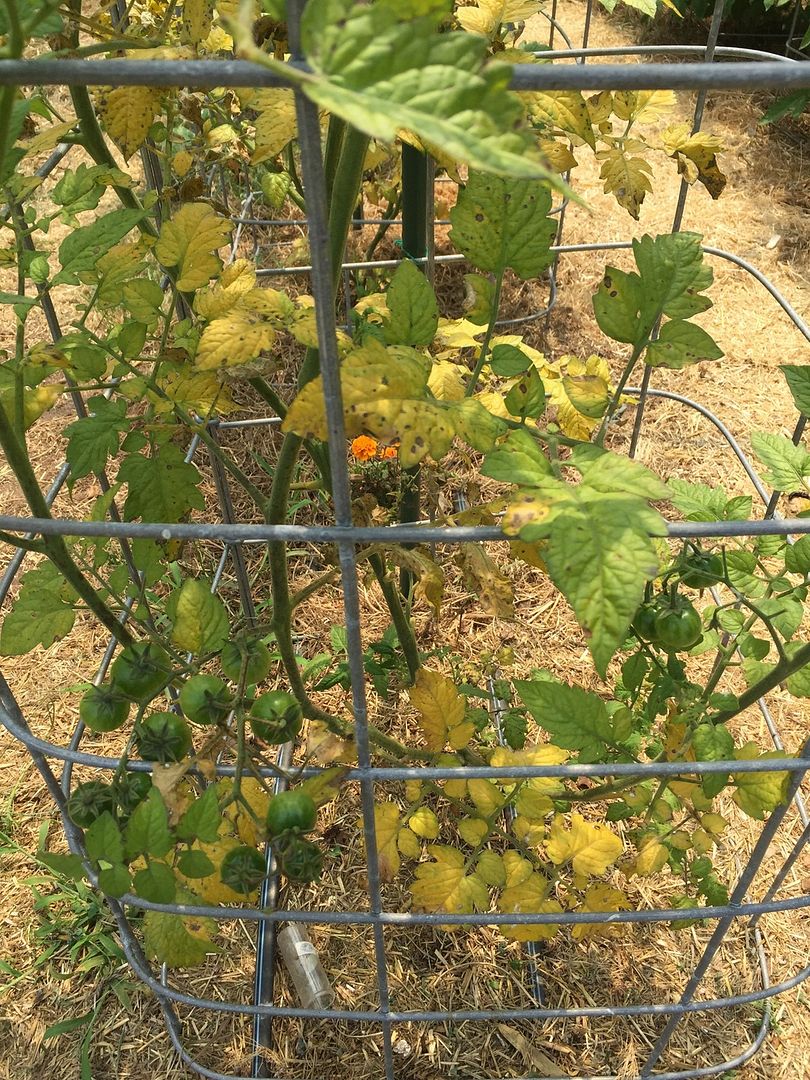 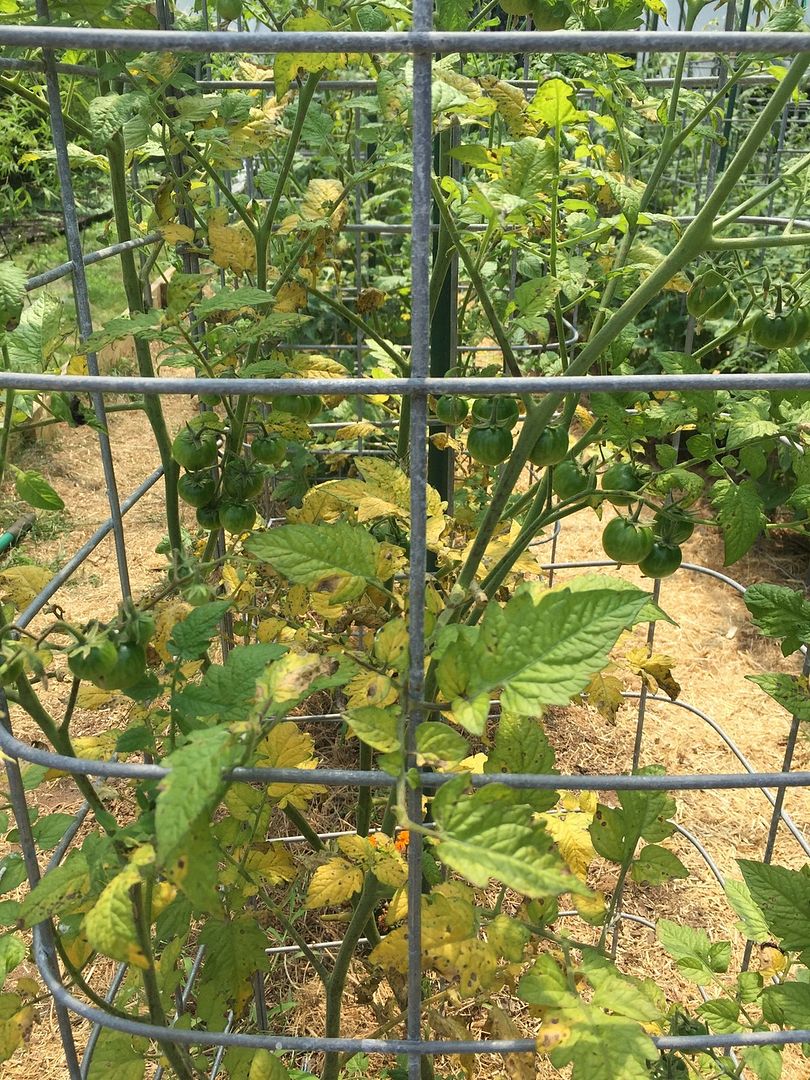 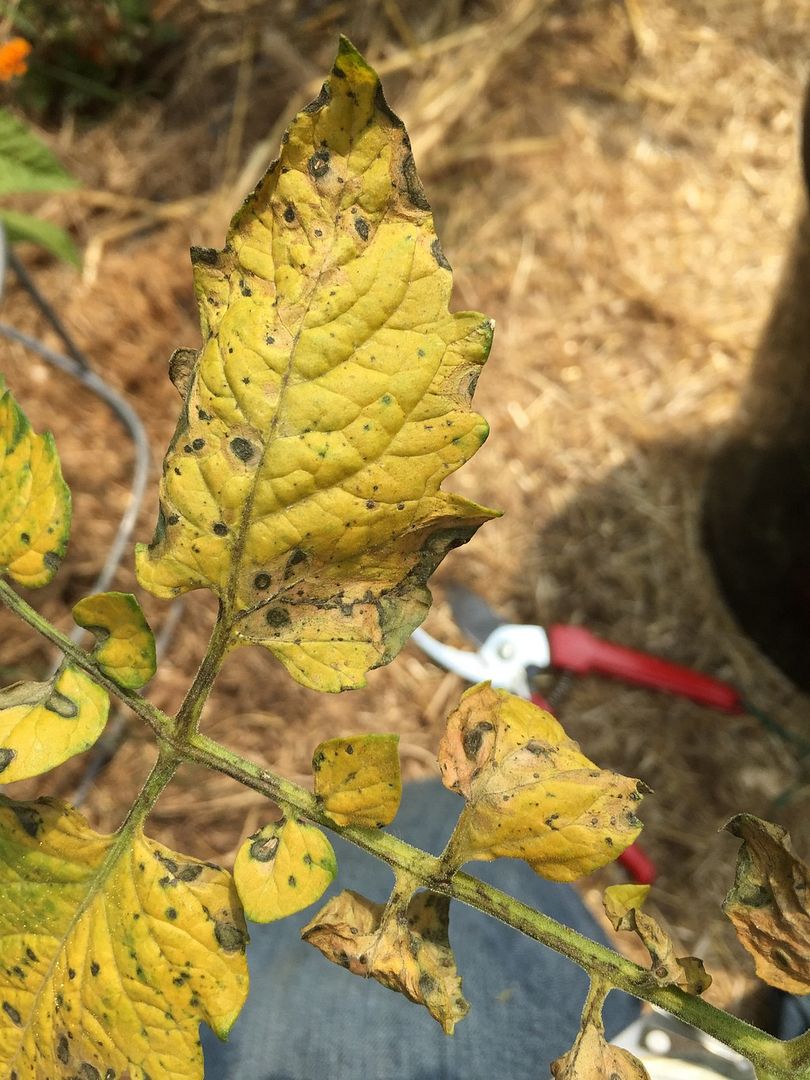 After removing everything...Sunscald pictures to follow  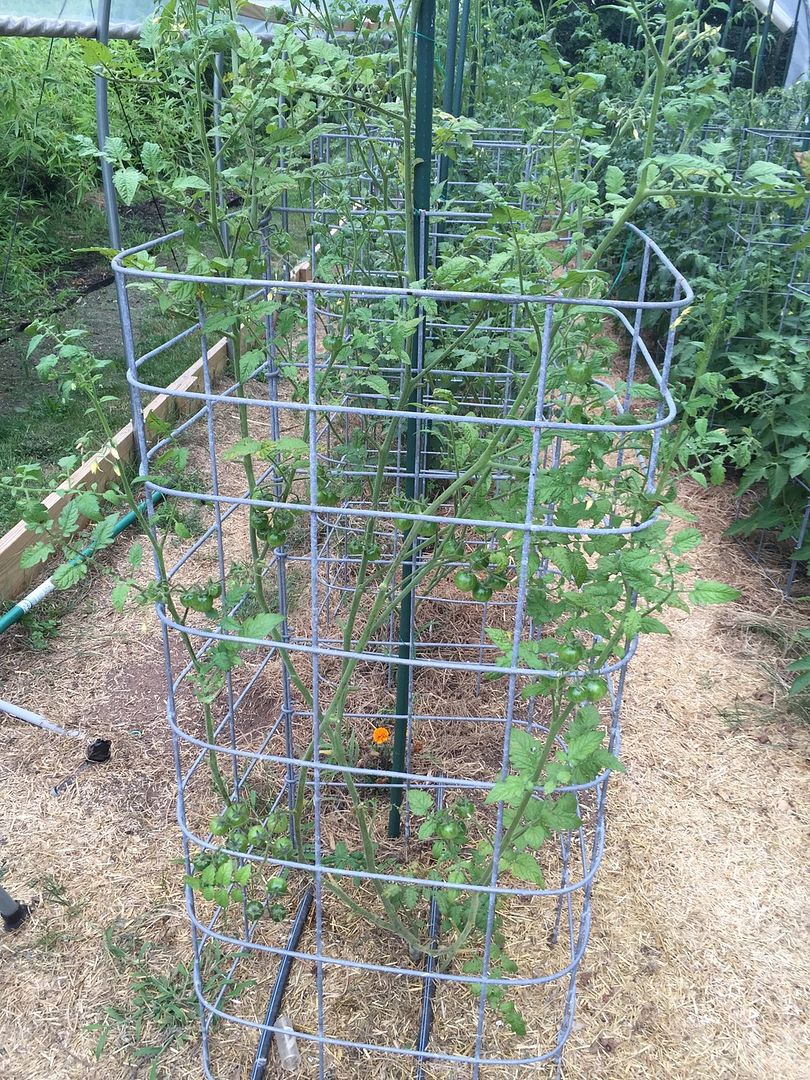
|
|
|

|
 |
|
|
